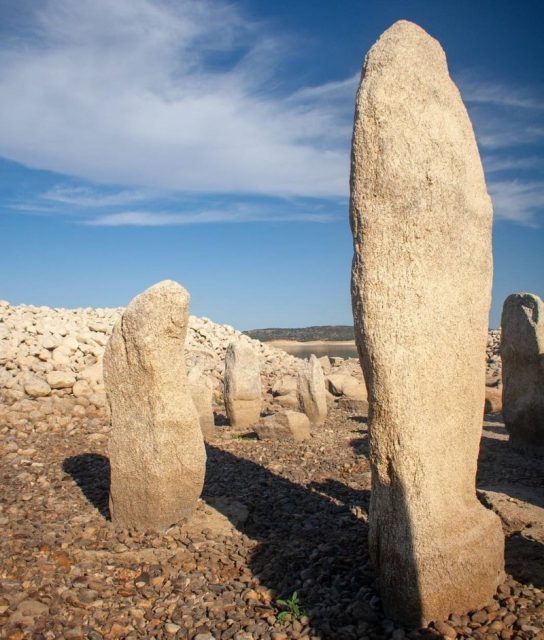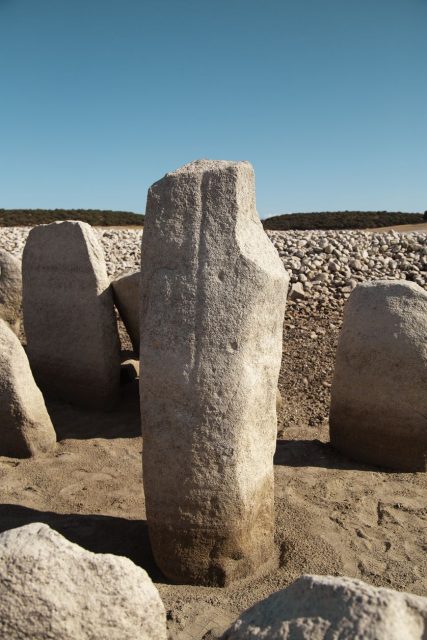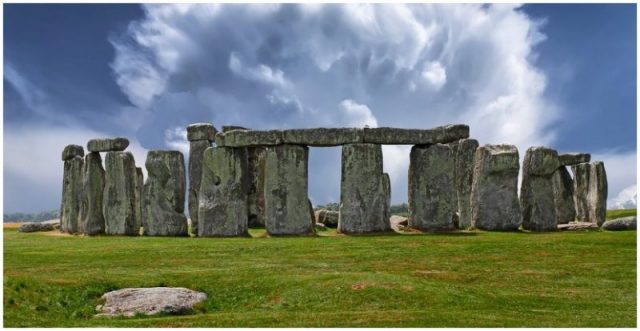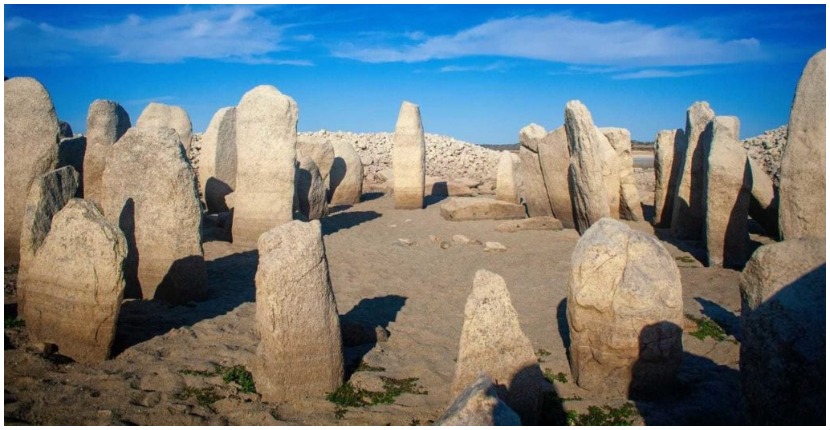An extreme heat wave in Europe this past summer has revealed a Spanish Stonehenge. Due to the heat many countries, including Spain, endured extreme temperatures and drought. One region in the country, known as Extremadura, already known as one of Spain’s hottest areas, has suffered enormously; farmers have lost millions of Euros as a result of it.
One remarkable aspect of the heat, however, that many folks are reveling in is the appearance of a dolmen, a group of of ancient standing stones that has appeared in Extremadura as water levels have shrunk. Reported in Smithsonian.com, water at the Valdecanas Reservoir, in the province of Caceres, has evaporated and revealed an astonishing part of Spain’s rich archaeological history.

The Dolmen of Guadalperal, as the site is formally called, is at least 7,000 years old, an ancient monument that many people in the region have only heard about from grandparents or at school. And, while some locals have been negatively impacted by the drought this past summer, others are seizing the opportunity to see first hand something they have only glimpsed before as it’s been covered in water for decades.

The site houses what is left from the ancient monument, designed around an open area. Its shape is rather like that of a doughnut made of sand, with massive stones standing in the center of it. It takes time to trek to the area, but locals and experts alike are thrilled to have the opportunity to do so, however briefly it may stay. When rain comes, the site could once again disappear.

Experts say the monument was built in the 5th century, on the banks of the Tagus River. But the site, like so many ancient relics, was almost obliterated by the passage of time and progress. During the 1960s, a number of civil engineering projects altered Spain’s landscape considerably, as many man-made lakes were added to its geography. Back then, governments were not as preoccupied with environmental issues and the preservation of history, certainly not the way they are today.

Angel Castaño, a resident of the area, is leading a group hoping to move the stones to an area where they will remain uncovered. He told The Local, “We grew up hearing about the legend of the treasure hidden beneath the lake and now we finally get to view them. There certainly may have been treasures buried beneath the stones once upon a time, but for us now, the treasures are the stones themselves.”
The more than 100 stones and what’s left of the site has been likened to Stonehenge, in the U.K. and is sometimes called the Spanish Stonehenge.

Castano iterates that the stones are ancient and should be studied with appropriate archeological equipment. But of course, time is of the essence, because when the rain comes, the monument may disappear into the lake, as it has before.
Castano hopes the Spanish federal government takes the issue of the Dolmen of Guadalperal seriously and believes the area should not have been altered in the first place. But Spain, like many nations, was undergoing development and had to make sacrifices in some areas to make achievements in others. They got power and water to an entire area that had neither. Still, Castano, for one, is not convinced it was wise. The flooding caused the forced relocation of a local town. It also covered the dolmen and an ancient Roman city.
Related Article: DNA Reveals the Origin of Stonehenge Builders
Whether the government has the time, money and inclination to study the Spanish stonehenge remains to be seen. But it’s obviously a site people are enjoying while they can, and a place experts are rushing to study before it disappears.
